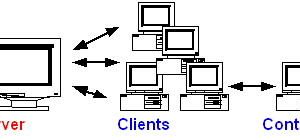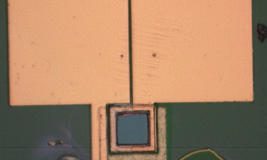If you’re on a shopping trip for PC hardware, and you come across this magazine in your favorite computer store, read the hardware articles before you hit the aisles.
A man went to the doctor and said, “Doctor, it hurts when I do this.”
“Well, don’t do that, then,” said the doctor.
Simple but good advice. In the world of Linux, many people subject themselves to pain and suffering trying to get Linux to work on crummy hardware, when they could just not do that, and instead do some research (LJ is a great resource) to find hardware that works well. That doesn’t mean wizards who want to hack new drivers shouldn’t try to get Linux working on bad, even pathologically stupid, hardware if they want. But if you’re planning to get a new web server on the Net by Monday, don’t start grabbing random crap off the shelf at Discount Computer Land on Sunday night.
If you’re on a shopping trip for PC hardware, and you come across this magazine in your favorite computer store, read the hardware articles before you hit the aisles. Picking high-quality, Linux-compatible parts will save you a lot of time and effort, and will encourage the hardware vendors to test their stuff with Linux in the first place. Buy the magazine afterward, though. If you promise to buy the magazine and the store people say “Hey, this isn’t a library,” you can point them to this:
Hello, nice computer store person. Please let this customer read the hardware articles because he or she promises to buy the magazine, and you might sell some hardware, too. Thank you.
The Duron is the “cheap version” of AMD’s Athlon CPU. It’s not as fast as the fastest Athlons or Pentium IIIs, it doesn’t have as much cache, but it is very usable in a good basic desktop machine that runs StarOffice, the GIMP or your favorite development tools. ASL, Inc. has built a respectable Linux workstation around Duron, with top-quality parts and performance that’s more than adequate for almost everyone.
Everyone, that is, except people who want the current top-of-the-line Linux machine. Jason Collins, Mike Higashi, Sam Ockman and I sat down for a fine dinner at Taqueria Los Charros in Mountain View to discuss hot hardware, cool cases and fans, and we got some good recommendations from Eric Raymond and Darryl Strauss, too. So check out the article if you’re building a no-compromises workstation, and if you’re ever in Mountain View, I recommend the super carnitas burrito.
Thinking of dual booting? Well, don’t. If you’re seriously into learning Linux, don’t handicap yourself by putting it on a spare partition on the same machine with all your legacy stuff. The First Law of Dual Booting states that “The application you need is always on the other OS.” So where do you put Linux? On a cheap but stable Linux system, naturally. Jason Schumaker took a savage journey into the heart of the cheap hardware market, and emerged with “Return of Revenge of the Killer $800 Linux Box”–a good selection of high-quality parts that are trouble-free with any Linux software you care to name. That is more than you can say for most PC vendor’s low-end desktop box du jour. Whether you’re building a cheap box to learn Linux or building a main machine on a budget, Jason’s selection is a good place to start.
Building the Ultimate Linux Workstation
Learn what several Linux luminaries have to say about putting together a top-of-the-line Linux box. Don Marti breaks down the vitals of each component, providing recommendations and commentary. Read Don’s article to learn what it takes to have an ultimate Linux workstation. by Don Marti, see page 80
The Return of the Revenge of the Killer $800 Linux Box
Jason Schumaker doesn’t have much money, so he’s found a way to build a responsive, yet inexpensive Linux box. His article provides helpful and informative information for anyone not able to afford Don Marti’s system. by Jason Schumaker, see page 88
AMD’s Duron Processor
Linux enthusiasts are familiar with AMD processors. Don Marti tags the AMD Duron as the future processor of choice for Linux desktops. He recently evaluated a Duron box from ASL—read his article to see how it compares to the Athlon. Don Marti, see page 92
 Linux, Linux OS, Free Linux Operating System, Linux India Linux, Linux OS,Free Linux Operating System,Linux India supports Linux users in India, Free Software on Linux OS, Linux India helps to growth Linux OS in India
Linux, Linux OS, Free Linux Operating System, Linux India Linux, Linux OS,Free Linux Operating System,Linux India supports Linux users in India, Free Software on Linux OS, Linux India helps to growth Linux OS in India




